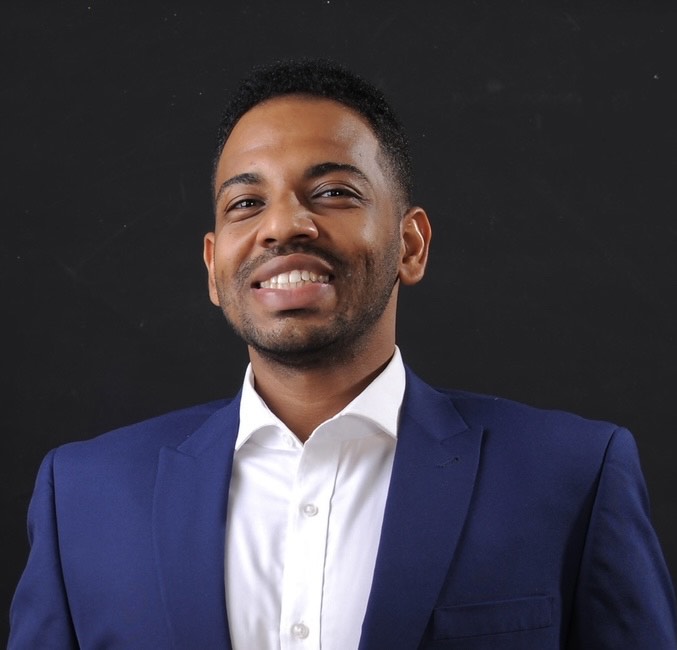The conflict in Sudan puts Sudanese civilians at grave risk. Those who try to escape face a difficult flight and harsh displacement circumstances. Hamid Khalafallah shares a personal account of his escape.
When the conflict broke out in the morning of April 15, I was with my family at our home in Bahri, the northern district of Sudan’s capital Khartoum. We stayed there for three weeks, despite the remains of a bomb falling into our backyard on the second day of the war and the occasional unwelcome stray bullets, putting us at risk. Power was cut for most of the time. We didn't have a single drop of running water from the first day on, so we relied on salty water that we fetched from nearby wells. The decision to leave took daily family meetings for about two weeks. Most of the outcomes of the meetings were incoherent and irrational. All options were difficult, but we were privileged to have cash at hand to be able to pursue any of these options. For most Sudanese families, that is not the case. At the three-week mark, we left.
Since that day in April, Sudan has been plagued by a protracted conflict between the Sudanese Armed Forces (SAF) and the paramilitary Rapid Support Forces (RSF). It is the Sudanese civilians who bear the brunt of this devastating conflict through immense suffering, displacement, and loss of life. The ongoing clashes have left innocent civilians with an impossible decision to make: remain trapped in a violent crossfire or flee in a dangerous and expensive search of a safe haven.
At each military checkpoint, a soldier with an AK-47 got on the bus
We left our home with a few essential belongings in the beginning of May. Our first destination was Wad Medani, a smaller city about 200 kilometers south of Khartoum. As soon as we got on the bus to Medani, an armed RSF soldier on a motorbike approached the vehicle and demanded fuel. While all passengers remained silent, the driver siphoned a bottle of fuel out of the tank of the bus and handed it to the soldier. In celebration of the event, the soldier fired three bullets in the air.
On our way, we passed through three RSF checkpoints. Every time this happened, an RSF soldier with an AK-47 [Kalashnikov assault rifle, Editor's note] would get on the bus and ask if there were any SAF-associated personnel on board. At one of these checkpoints, an RSF soldier roamed the bus, locked his eyes with mine and asked me if I was a SAF officer. I shook my head in denial with a nervous smile on my face. Then he demanded to see my ID card, which he examined while repeatedly looking into my eyes for over a minute. This was probably the longest minute of my life. Finally, he gave it back to me and allowed us to continue our journey.
Three hours later, we arrived at Medani. By then we had received the news that a group of RSF soldiers had broken into our home and turned it into an RSF base. We spent the night in Medani and made our way towards Port Sudan with stops in Qadarif and Kassala. Port Sudan, bordering the Red Sea and Sudan's main seaport, was the final destination of our journey of internal displacement. The city has become a hub for those seeking to flee Sudan by air or by sea. Since my elderly grandmother travelled with us, the exhausting and uncertain journey to cross the Egyptian border by land was not an option for us.
I kept staring at the Sudanese soil and wondered: When will I return?
We waited for ten days in Port Sudan, for a confirmed flight and for the issuance of my Egyptian visa. Finally, everything was sorted and we were booked for a flight to Cairo via Jeddah. I’m used to travelling by air, but getting on the “evacuation plane” felt like a new and unpleasant experience. It was only when the plane took off, that the gravity of reality hit me. Thanks to a clear sky, I kept staring at the Sudanese soil and wondered: When will I return? The plane quickly turned from the soil and flew over the Red Sea, interrupting my daunting thoughts.
In comparison to other routes, the route we took to get from our home in Khartoum to Cairo was relatively safe and comfortable. Still, the whole journey took almost two weeks and cost us about 1,900 US-Dollar per person. Under normal circumstances, the door-to-door trip from Khartoum to Cairo would have taken no longer than six hours and cost less than 200 US-Dollar. The contrast is surreal. For the vast majority of the Sudanese people, the escape from war is completely unattainable.
The civilians trapped in Sudan find themselves in a precarious and vulnerable position. They become the inadvertent victims of a conflict they did not choose, facing grave consequences on a daily basis. Civilians are in constant danger and live in constant fear as the violence spills into their communities. Homes are destroyed, markets are shuttered and schools are forced to close, depriving children of their right to education. The basic needs of food, water and healthcare become scarce, exacerbating an already dire humanitarian crisis in Sudan.
The people trapped in Sudan face human rights violations and atrocities
The lack of distinction between combatants and non-combatants by both of the warring parties has led to widespread human rights abuses and atrocities. Sudanese civilians face the grim reality of these violations. Reports of indiscriminate bombings, sexual violence and arbitrary arrests have emerged, painting a disturbing picture of the situation of the Sudanese population. Women, children and the elderly bear the brunt of these abuses, leaving scars that will take generations to heal.
With millions of Sudanese people fleeing their homes in search of safety internally and externally, the conflict has triggered mass displacement. However, the journey to safety is riddled with numerous challenges, posing further risks to fleeing civilians. Besides the immense financial costs mentioned above, civilians are at risk of violence at checkpoints as well as armed robbery on the way. Upon arriving at the borders, they are often met with difficult entry regulations and dire humanitarian circumstances.
As internally displaced people or international refugees, Sudanese civilians face multiple challenges, such as finding shelter, food and healthcare in overcrowded camps. The latest IOM report suggests that a total of approximately 3.4 million people have been displaced hitherto due to the Sudanese conflict, both internally and externally. Over 757 thousand of those have arrived in the neighbouring countries, with the highest number fleeing to Egypt and Chad, followed by South Sudan, Ethiopia, the Central African Republic and Libya. However, the majority of the fleeing people – over 2.6 million – remain trapped in Sudan as internally displaced persons.




















